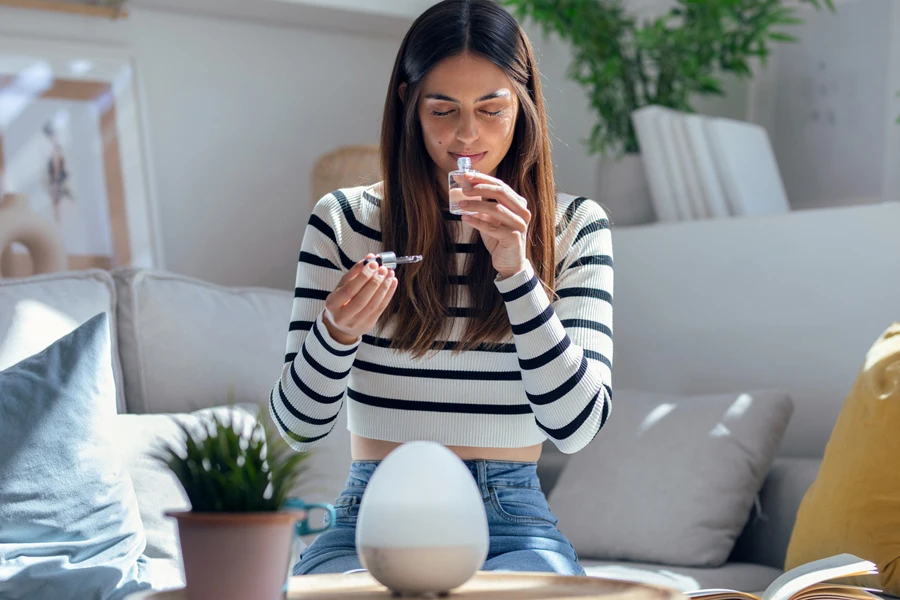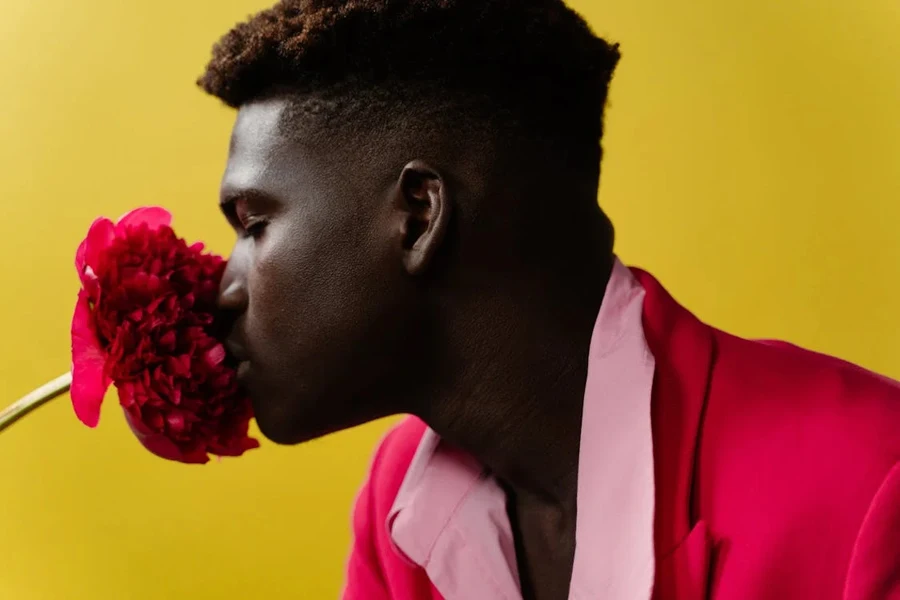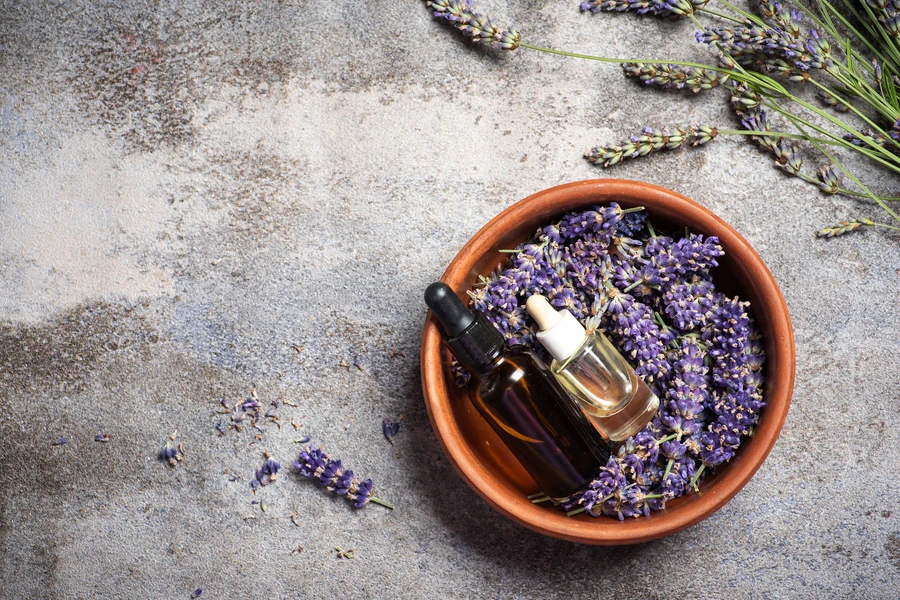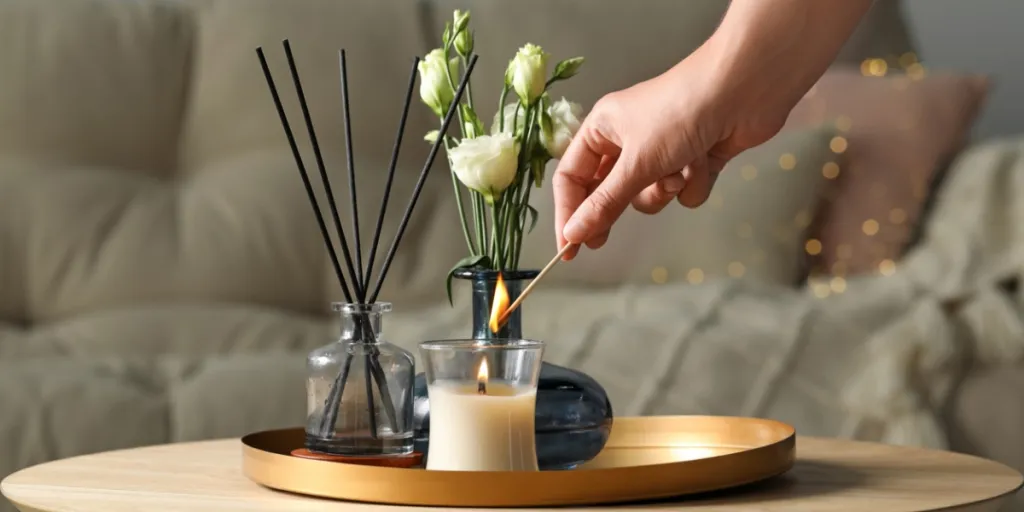The fragrance industry is about to lead the Bio-Industrial Revolution, with Biodesign and AI shaking things up. Everything, from materials to ingredients, product development to aesthetics, will evolve to meet the needs of consumers who crave more emotional, intense experiences. AI will be one of the top three science and tech drivers transforming fragrance for the better.
Neuroscience will play a huge role, too—whether it’s boosting wellness or sparking romance, it’ll be part of the story. And let’s not forget biotechnology! It’s giving perfumers a whole new palette of sustainable ingredients, all brought to life by the power of AI.
But this is only a tip of what fine fragrances will offer in 2027. Keep reading to discover fine fragrance trends that will dominate 2027.
Table of Contents
5 fine fragrance trends to look forward to in 2027
Bottom line
5 fine fragrance trends to look forward to in 2027
1. Solution scenting

As perfumers get more skilled with AI, the speed at which they can solve fragrance challenges is about to skyrocket. According to Mintel, consumers view fragrance as less eco-friendly than other beauty products. However, brands can change that perspective by highlighting how AI can make the lab-to-bottle journey more sustainable.
AI helps perfumers create formulas using planet-friendly materials, especially as white biotech ingredients hit the market. Moschino’s Toy 2 Pearl used AI to select green chemistry ingredients, while IFF used neuroscience data to activate emotional and cognitive responses in their formulas.
Prescriptive scenting
AI and neuroscience give perfumers the power to address everyday wellness issues through fragrance. Do consumers need better sleep or more energy? AI-backed scented solutions are here to help. For example, IFF and SleepScore Labs created Sleepy’s Scented Pillow Insert, which 80% of users said improved their sleep.
Fragrances for menopause relief, like Miseico’s night sweat-easing perfumes, are also rising. Even skincare is getting in on the action with prescriptive scents, like Symrise’s Fractives, which not only smell great but also deliver skincare benefits by removing harmful bacteria.
Personalized scents
AI-driven personalized scent profiles are becoming a consumer favorite. Brands like EveryHuman use AI “machines” to create custom scents in minutes. Estée Lauder is experimenting with facial recognition technology in China, where AI analyzes consumers’ facial responses to certain scents and suggests alternatives that match their preferences.
How to leverage it
Embrace the power of neuroscience and biotech ingredients combined with AI. Focus on creating sustainable formulas and telling those stories. Additionally, retailers should offer prescriptive scent solutions for everything from body care to home fragrances that improve customers’ lives.
2. Memory powered

Emotions will always play a key role when people pick a fragrance, especially when it taps into memories that matter to them. As fragrance embraces cultural diversity, people ask, “What does my heritage smell like?” That’s why collaborations like Odeuropa and IFF’s Historical Scent Collection allow visitors to galleries, museums, and libraries to smell what history was like—an incredible sensory experience.
Unlocking childhood memories
Here’s a fun fact: teenage memories create the strongest emotional ties. According to Stockholm University, scents from those early years leave a lasting impression. Brands like L’Occitane tap into this with Forgotten Flowers, recreating old-world blooms like sweet clover and hawthorn to spark new scent memories.
Collectible memories
Nostalgia is big right now, especially with thrifting and vintage trends booming. Fragrances are becoming part of this time travel, letting people relive cherished moments. For example, Jo Malone London’s Scented Mementos was inspired by antique markets, while indie brand 27 87’s Per Se presents memories in personalized fragrances.
How to leverage
Use fragrance and beautifully designed, collectible packaging to unlock those little “glimmers” of joy. Consider scents that remind people of childhood favorites—like Young Beast’s milk-flavored popsicle-inspired scent. Also, consider diving into AI and biotech to recreate beloved memories tied to the scents of loved ones or special places.
3. New love

Fragrance brands need to rethink their approach to romance, especially given Gen Z’s fresh perspective on love and relationships. Givaudan’s research found that 73% of Gen Z in the U.S. and 68% in France believe fragrance plays a big role in attraction. But here’s the twist—Gen Z is over traditional, gendered relationship roles.
They crave real, heartfelt connections. Givaudan responded by crafting a fragrance exhibition celebrating open and raw emotional expression. The best part is that fragrance can play a powerful part in building deeper human connections.
Sensual gourmands
The rise of gourmand fragrances fits perfectly into this new, gender-free romantic landscape. Think playful, edible scents, like the biodegradable, lickable fragrances created by Dutch company DSM-Firmenich in partnership with chef Diego Schattenhofer. These culinary-inspired scents blur the line between fragrance and flavor, creating a fun, sensory experience.
How to leverage this trend
Shift away from outdated, gender-based narratives and focus on emotional empathy and authentic sensuality. Skin scents, vanilla notes, and gourmand fragrances can set the stage for a modern, romantic story. And don’t forget to explore new, edible fragrance ideas—there’s a whole world of possibilities for fragrance that feels personal and playful.
4. Invisible sensory dimensions

Consumers crave more than just a scent—they want emotional, multidimensional experiences. Fragrance becomes even more powerful when tied to memories, colors, textures, and sounds. It’s not just about smell anymore—it’s about creating a full sensory journey. IFF nailed this with their “sound” logo, embracing a multi-sensory approach, while Fischersund connects scent with the emotional energy of live music at their gigs.
Research in the UK shows how scent and color are linked. For instance, when people smell coffee, they choose a red-brown shade on a color wheel. Bleu Nour’s founder, who has synesthesia (where senses blend), uses this ability to match colors to fragrances, turning the experience into something unique—the colors even appear on the product bottles.
The ASMR approach to scent
Sensory stimulation can do wonders for emotional wellness. Consider the calming effect of ASMR—IMCD Beauty has ingredients that claim to have a similar relaxing vibe. Consumers are looking for an escape, and fragrance can deliver that.
How to leverage this trend
Don’t just think about fragrance—consider the full sensory package. Layer in color, sound, and even touch to elevate the emotional experience. Take inspiration from cultural storytelling to connect people to their heritage or give them a window into another’s.
Fu Sheng Liu Ji’s patented technology, for example, blends top and base notes in a way that pays tribute to ancient Chinese perfumers, creating a fragrance experience that unfolds in cycles.
5. Hanging on to naturals

Consumers may love the idea of natural scents, but with the growing eco-crisis, they face a dilemma. Brands need to step in with education and transparency to guide them toward more sustainable options without losing the allure of a good fragrance.
Educating the consumer
According to Mintel, 73% of people in the UK are curious about how natural and organic products are made. That clearly indicates that brands need to step up their transparency game. With new ingredients like white biotech, upcycled materials, and captured components, brands must be crystal clear about what they mean by “natural.”
Biotechnology is also helping brands like Future Society (US) create perfumes from the DNA of extinct plants—yes, extinct! They ensure their customers know how this innovative process fits into their sustainability journey while being honest about areas they’re still working to improve.
How to take action
Help customers understand all the changes happening with sustainable ingredients. Be transparent about the creation process to avoid being accused of greenwashing. Additionally, businesses must highlight any new ingredients, how manufacturers make them, and the benefits they offer.
Scentjourner in Singapore, for example, uses as many biodegradable and upcycled components as possible, with full traceability. Their scents remind consumers they’re making a positive impact while still enjoying their favorite fragrances.
Bottom line
Today’s fragrance market focuses on making real, emotional connections. When a scent can tap into something universal, like childhood memories, it instantly becomes more relatable and powerful across cultures. So, 2027 will see AI-crafted scent profiles breaking new ground, offering solutions for everything from better sleep to easing menopause symptoms.
For romance, forget the old-fashioned, gendered approach. Focus on offering fragrances that feel emotionally honest, kind, and empathetic. While natural ingredients are still a top favorite, there’s a huge opportunity to educate consumers on the wonders of biotech materials. 2027 will show them how innovation can take their beloved natural scents to the next level.





 বাংলা
বাংলা Nederlands
Nederlands English
English Français
Français Deutsch
Deutsch हिन्दी
हिन्दी Bahasa Indonesia
Bahasa Indonesia Italiano
Italiano 日本語
日本語 한국어
한국어 Bahasa Melayu
Bahasa Melayu മലയാളം
മലയാളം پښتو
پښتو فارسی
فارسی Polski
Polski Português
Português Русский
Русский Español
Español Kiswahili
Kiswahili ไทย
ไทย Türkçe
Türkçe اردو
اردو Tiếng Việt
Tiếng Việt isiXhosa
isiXhosa Zulu
Zulu